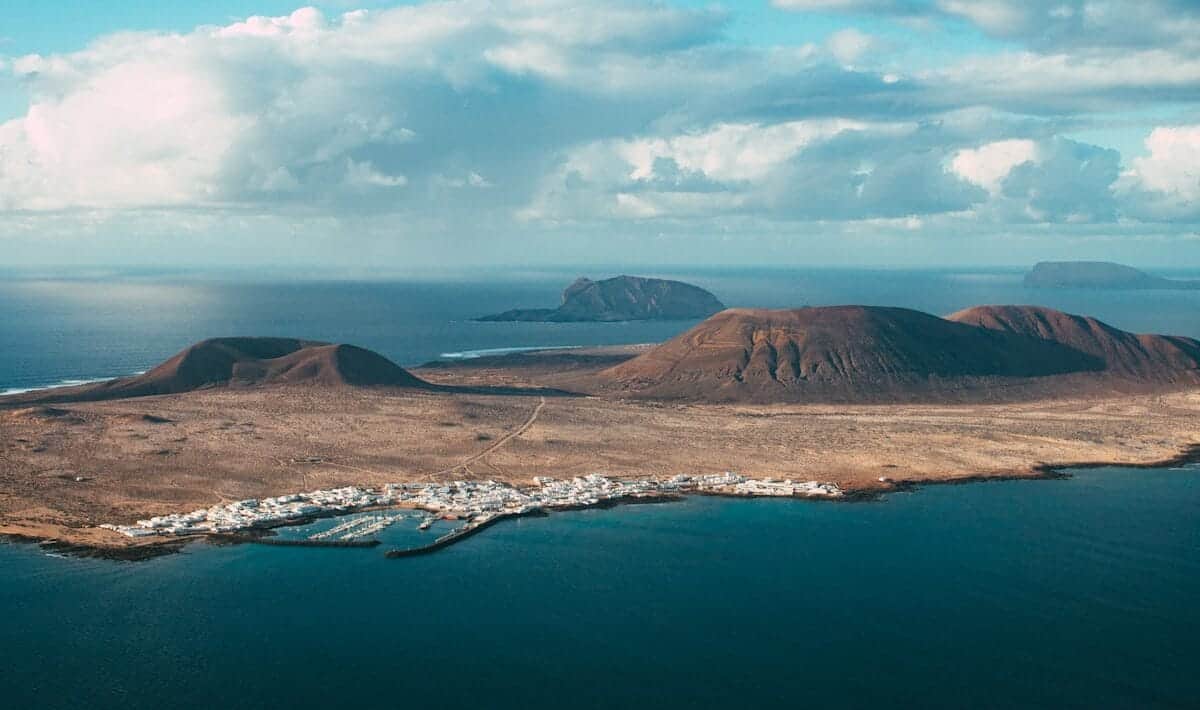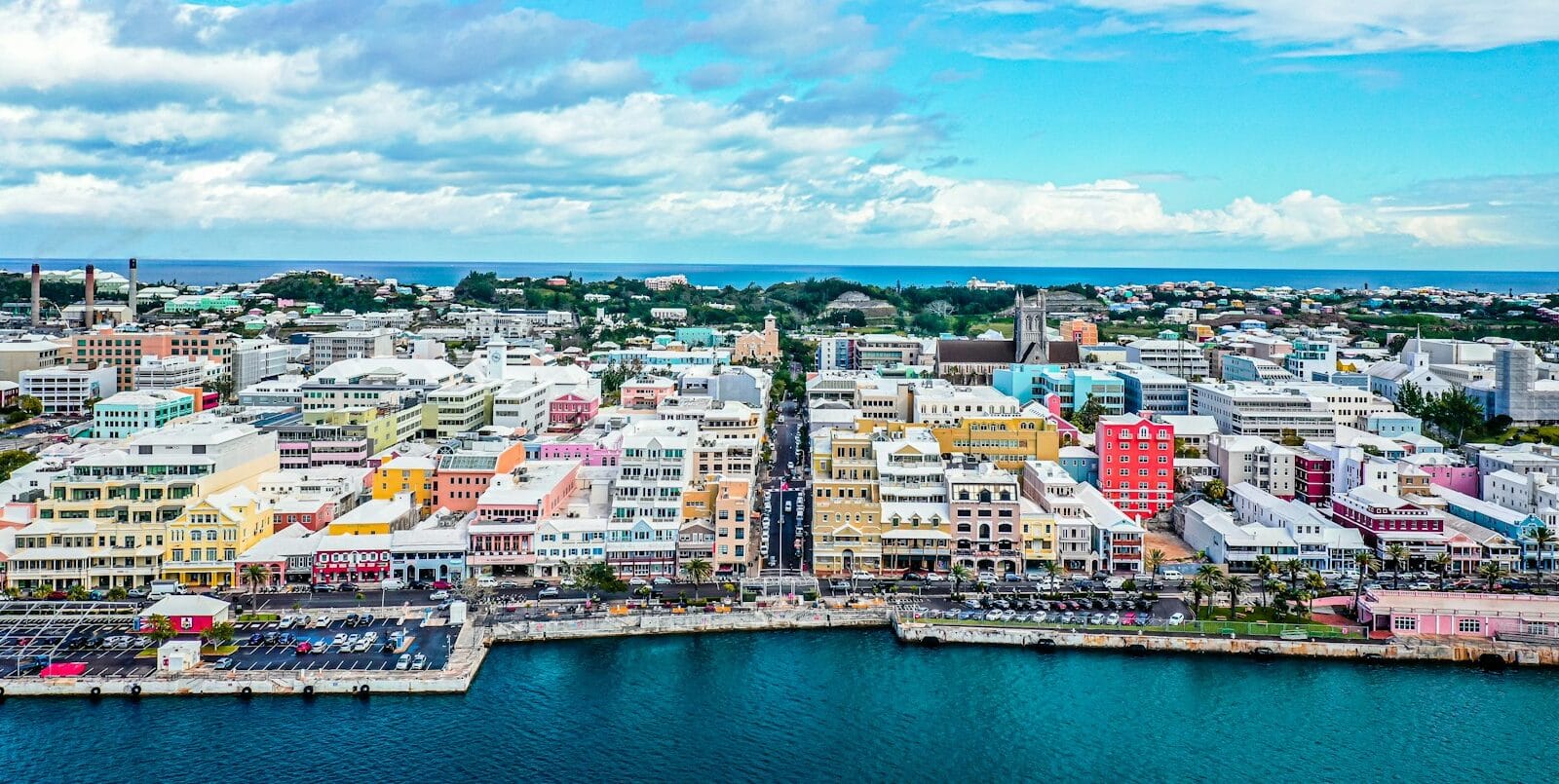Canary Islands Travel Guide: Adventure, Culture & Island Sunshine
Intro to Canary Islands Travel Guide
The Canary Islands are where Europe meets the tropics — a volcanic Spanish archipelago off the northwest coast of Africa, blending rugged nature, black-sand beaches, and subtropical charm.
Each of the seven main islands offers a unique rhythm — from Tenerife’s festivals and high-altitude hikes to Lanzarote’s Martian landscapes and La Palma’s starry skies.
Start your journey with our Canary Islands Travel Guide and explore all it has to offer…
Where to Go in Canary Islands
El Hierro | Fuerteventura | Gran Canaria | La Gomera | La Palma | Lanzarote | Tenerife
💡Quick Facts:
Destination: Canary Islands
Continent: Europe (geographically off Africa’s northwest coast)
Country: Spain (Autonomous Community)
Administrative Division: 8 main islands – Tenerife, Gran Canaria, Lanzarote, Fuerteventura, La Palma, La Gomera, El Hierro, La Graciosa
Area: 7,493 km²
Population: ~2.2 million
Density: ~293 people per km²
Capital: Santa Cruz de Tenerife & Las Palmas de Gran Canaria (shared capital status)
Regions/Subregions: Province of Santa Cruz de Tenerife and Province of Las Palmas
Official & Regional Languages: Spanish (official), Canarian Spanish dialect; English and German widely spoken in tourist zones
Currency: Euro (€)
Time Zone(s): Western European Time (WET, GMT+0) / Western European Summer Time (WEST)
Airports: Tenerife South (TFS), Gran Canaria (LPA), Lanzarote (ACE), Fuerteventura (FUE), La Palma (SPC), others inter-island
Climate: Subtropical desert – mild year-round, sunny with low rainfall
Known For: Volcanic landscapes, black and white sand beaches, Teide National Park (UNESCO), surfing, hiking, year-round sun, Carnival festivals
🛂Arrival Info:
– Part of Spain and the EU; Schengen visa rules apply
– Visa-free for up to 90 days for passport holders from EU, UK, U.S., Canada, Australia, Japan, etc.
– No passport control when flying from mainland Spain or within Schengen
– Spain Visa Portal
💉Health Info:
– No mandatory vaccines required
– Recommended: Routine immunizations; Hepatitis A and B for longer stays
– Excellent hospitals and clinics on all major islands
– European Health Insurance Card (EHIC) valid for EU visitors
– Spain’s Ministry of Health
✅ Check travel insurance options for travel emergencies, delays, and medical needs abroad — get coverage here
✅ Stay Informed with Official Updates: World Health Organization – International Travel and Health | Travel health updates
🚨Travel Advisory:
– Considered one of the safest regions in Spain
– Petty theft can occur in tourist zones or on beaches – keep valuables secure
– Occasional forest fires in dry season (La Palma, Tenerife)
✅ Stay Informed with Official Updates: US Travel Advisory | UK Foreign Travel Advice
📅Holidays:
– Carnival (February–March): One of Europe’s largest in Santa Cruz de Tenerife and Las Palmas
– Día de Canarias (May 30): Celebrates Canarian identity and autonomy
– Romerías: Traditional pilgrimages and festivals celebrated locally on each island
– Christmas & Epiphany (Dec 25–Jan 6): Family-focused with Three Kings parades
– Semana Santa (March–April): Easter festivities with religious processions
💰Visitor Info:
– Currency: Euro (€); credit cards widely accepted
– ATMs common in cities and resorts; contactless and mobile pay options widespread
– Tipping: 5–10% appreciated but not obligatory
– Budget: €50–€80/day | Mid-range: €100–€160/day | Luxury: €200+/day
– Islands are VAT-exempt — duty-free shopping available (alcohol, perfumes, electronics)
✈️Airports:
– Tenerife South (TFS): Main international gateway to Tenerife
– Gran Canaria (LPA): Second-busiest, serves all of Gran Canaria
– Lanzarote (ACE), Fuerteventura (FUE): Strong connections to EU
– Smaller airports serve La Palma (SPC), El Hierro (VDE), La Gomera (GMZ), etc.
– Inter-island flights via Binter Canarias and Canaryfly; ferries also connect islands
✅ Delayed or canceled flight? Check if you’re eligible for compensation
🚍Transport:
– Buses (guaguas) are reliable and affordable, especially in Gran Canaria and Tenerife
– Car rental is the most flexible way to explore mountains, remote beaches, and small villages
– Ferries (Fred. Olsen, Naviera Armas) link all inhabited islands
– Taxis available; metered and regulated
– Driving: Right-hand side; EU/UK/US licenses accepted for short stays
✅ Book reliable airport transfers and in-city rides in advance. Reserve your ride here
📶Connectivity:
– SIM cards from Movistar, Orange, Vodafone available at airports and kiosks
– 4G coverage is excellent across most islands; 5G active in urban zones
– eSIM supported by major providers
– Free Wi-Fi common in hotels, cafes, and public spaces
– Roam-like-at-home for EU citizens; others should use local SIMs or eSIMs
✅ Stay connected abroad with affordable eSIM data packs. Get your eSIM here
📜Laws & Etiquette:
– Legal drinking age: 18; alcohol widely available
– LGBTQ+ travelers welcome — Gran Canaria (especially Maspalomas) is a leading gay-friendly destination
– Topless sunbathing accepted on most beaches; nudist beaches are designated
– Respect nature in protected areas like Teide and Timanfaya National Parks
– Avoid loud or disrespectful behavior during local festivals or religious holidays
🛡️Emergency Info:
– Emergency: 112 (police, ambulance, fire)
– U.S. and UK embassies located in Madrid; consular assistance via local honorary offices
– Tourist support: Local tourism offices in all major cities and ports
– Canary Islands Civil Protection
✅ Use embassy locator tools: Embassies Worldwide
🌦️Weather:
– Pleasant year-round: Avg temps 20–28°C (68–82°F)
– Best time to visit: March to November for guaranteed sunshine and fewer winds
– Winter months are peak season for Europeans; book early for holidays
– Summer trade winds keep temperatures comfortable even in the hottest months
– Microclimates: North coasts greener and cooler, south coasts sunnier and drier
✅ Stay prepared—check the weather forecast for your destination — Weather Forecast
Canary Islands Cities & Major Destinations
Each island has a distinct personality — from urban culture to remote wilderness.
Santa Cruz de Tenerife (Tenerife)
Capital of the province and cultural epicenter, Santa Cruz boasts colonial architecture, art museums, the futuristic Auditorio de Tenerife, and one of the world’s largest Carnival celebrations.
Las Palmas de Gran Canaria (Gran Canaria)
Co-capital of the archipelago, this beachside city is known for its surf culture, golden Playa de Las Canteras, and historic Vegueta district. It blends modern amenities with old-world charm.
Puerto de la Cruz (Tenerife)
A former 19th-century resort with volcanic beaches, lush gardens, and the renowned Loro Parque. It’s more laid-back than the south and ideal for scenic escapes.
Arrecife (Lanzarote)
This coastal capital is the gateway to César Manrique’s artistic legacy and the island’s volcanic parks. A good base for ferries and exploring the lunar-like landscape.
Costa Calma (Fuerteventura)
A windsurfing and beach lover’s haven, Costa Calma offers wide white-sand beaches and easy access to Jandía Natural Park.
San Sebastián de La Gomera (La Gomera)
Known for its quiet harbor, hiking access, and historical ties to Columbus, this town is the best base to explore La Gomera’s misty highlands.
Valverde (El Hierro)
El Hierro’s hilltop capital is small and peaceful — great for diving, rural trails, and escaping mass tourism.
Santa Cruz de la Palma (La Palma)
Colonial houses, wooden balconies, and scenic coastal walks define this charming capital — a great choice for stargazing and eco-tourism.
Nearby Natural Destinations
Teide National Park, Timanfaya National Park, Anaga Mountains, Caldera de Taburiente, and Cofete Beach all sit within reach of major towns.
How to Choose Where to Go in the Canary Islands
With so many islands, choosing your base depends on your interests.
For Volcanoes & Starry Skies
- Tenerife for Mount Teide, Spain’s tallest peak
- La Palma for Caldera hikes and world-class stargazing
For Beaches & Water Sports
- Fuerteventura for surfing, kitesurfing, and desert-like shores
- Gran Canaria for family-friendly beaches and lively towns
For Nature & Hiking
- La Gomera and El Hierro are ideal for lush forest trails, serenity, and off-grid travel
- La Palma is a UNESCO Biosphere Reserve with deep ravines and pine-covered slopes
For Art & Culture
- Lanzarote, shaped by artist César Manrique, is a living gallery of nature, design, and sculpture
- Tenerife and Gran Canaria host major festivals and colonial towns
For Off-the-Beaten-Path Travel
- El Hierro and La Graciosa offer volcanic wilderness, no crowds, and slow, soulful travel
- La Gomera and La Palma deliver unspoiled nature without heavy infrastructure
Natural Escapes & Scenic Highlights
Few regions in Europe offer the diversity of natural wonders found across the Canary Islands.
Teide National Park (Tenerife)
Spain’s highest peak (3,718m) towers over a Martian landscape of lava flows, rock spires, and volcanic craters. Hike, stargaze, or take the cable car for views above the clouds.
Timanfaya National Park (Lanzarote)
An otherworldly experience — drive through fields of solidified lava, tour geothermal vents, and dine at a restaurant where food is cooked by volcanic heat.
Corralejo Dunes (Fuerteventura)
Golden sands stretch beside turquoise waters, creating a desert-meets-ocean landscape perfect for photography, wind sports, and tranquil sunbathing.
Garajonay National Park (La Gomera)
A UNESCO-listed laurel forest shrouded in mist. Walk among ancient trees and hear birdsong echo through green ravines — it feels prehistoric.
Roque Nublo (Gran Canaria)
This 80-meter-high volcanic monolith is a sacred site and symbol of the island, surrounded by panoramic trails in the mountainous interior.
Caldera de Taburiente (La Palma)
A massive volcanic crater turned national park. Waterfalls, pine forests, and hiking routes offer some of the best eco-tourism in the archipelago.
Cofete Beach (Fuerteventura)
Remote and wild, Cofete is where the Atlantic roars against dramatic cliffs. It’s less for swimming and more for awe-inspiring solitude.
Charco de los Clicos (Lanzarote)
This green lagoon set inside a collapsed volcano near El Golfo contrasts beautifully with black sand beaches and fiery-red cliffs.
Anaga Rural Park (Tenerife)
A lush, mountainous corner with ancient laurel forests, cliffside hamlets, and epic hiking trails. A world away from the island’s tourist resorts.
Cultural & Historic Landmarks
The Canary Islands hold layers of history — from ancient Guanche cave dwellings to Spanish colonial towns and artistic marvels.
San Cristóbal de La Laguna (Tenerife)
A UNESCO World Heritage Site, La Laguna was the blueprint for Spanish colonial cities in Latin America. Walk its pastel-hued streets, old convents, and 16th-century churches.
Cueva Pintada Museum (Gran Canaria)
In Gáldar, explore an excavated Guanche village with geometric cave art painted over 700 years ago. Interactive exhibits bring pre-colonial life to the surface.
Castillo de San Gabriel (Arrecife, Lanzarote)
A 16th-century fortress on a small island bridge-connected to the capital. Originally built to defend against pirates, it now houses a historical museum.
Casa de Colón (Las Palmas, Gran Canaria)
This museum explores Christopher Columbus’s connection to the Canaries, maritime navigation, and colonial architecture — all set inside a palatial home.
Church of Nuestra Señora de la Concepción (La Palma)
Famous for its carved ceiling and preserved wooden balconies, this church is an architectural jewel of Santa Cruz de la Palma.
Mirador del Río (Lanzarote)
More than a viewpoint — it’s a work of art by César Manrique carved into the cliffs, offering dramatic vistas over La Graciosa and the sea.
Ethnographic Park Pirámides de Güímar (Tenerife)
Explore mysterious step pyramids and Thor Heyerdahl’s theory of transatlantic crossings in this archeological park.
Iglesia de Betancuria (Fuerteventura)
Located in the island’s former capital, this 15th-century church stands as a reminder of early colonial missionary work and artistic fusion.
Local Food, Arts & Experiences
Canarian cuisine blends Atlantic freshness, Spanish roots, and African influences — all with bold island flair.
Papas Arrugadas with Mojo
“Wrinkled” salt-crusted potatoes served with red and green mojo sauces — spicy, garlicky, and found at nearly every local table.
Gofio
A toasted grain flour used in soups, desserts, or as a thickener — a staple from Guanche times. Try escaldón de gofio in Tenerife or La Gomera.
Seafood Specialties
Grilled vieja (parrotfish), limpets with green mojo, octopus salad, and fried squid are must-tries, especially along Lanzarote and Fuerteventura’s coasts.
Queso de Cabra (Goat Cheese)
Award-winning local cheeses are smoked or coated in paprika. The cheeses from El Hierro and La Palma are especially prized.
Bienmesabe & Príncipe Alberto
Local desserts made from almonds, honey, or chocolate and layered with whipped cream. Often homemade and tied to island festivities.
Wine Regions
- La Geria (Lanzarote): Volcanic vineyards with vines grown in lava craters — unique and scenic
- Tacoronte-Acentejo (Tenerife): Rich reds from terraced slopes
- La Palma: Lesser-known but superb wines, especially malvasía
Traditional Festivals
- Carnival (Feb/March): One of the largest in the world, especially in Santa Cruz de Tenerife and Las Palmas
- Fiesta de San Juan (June): Bonfires, beach parties, and rituals to welcome summer
- Bajada de la Virgen (La Palma, every 5 years): Processions, costumes, and cultural pride
Local Art & Craft
- Manrique-Inspired Art in Lanzarote: Nature-meets-architecture style in homes, sculptures, and public buildings
- Silbo Gomero: A whistled language still used in La Gomera’s highlands — recognized by UNESCO as Intangible Cultural Heritage
Must-See Experiences in the Canary Islands
These iconic moments define a Canary Islands trip.
Climb Mount Teide at Sunrise
Begin before dawn and watch the shadow of Spain’s tallest mountain stretch over the sea — a surreal, unforgettable view.
Swim in Natural Lava Pools
The islands are ringed with charcos (tidal pools). Don’t miss Charco Azul (La Palma), Garachico (Tenerife), or Punta Mujeres (Lanzarote).
Sail from Fuerteventura to Lobos Island
This uninhabited islet features lagoons, sandy trails, and excellent snorkeling — just a 15-minute boat ride from Corralejo.
Hike the Forests of La Gomera
Step into the misty laurel woods of Garajonay, where time slows and birdcalls replace all sound. Magical and meditative.
Stargaze at Roque de los Muchachos
La Palma’s astronomical observatory offers telescope views of galaxies, planets, and meteor showers — with some of Europe’s clearest skies.
Explore Timanfaya by Camel or Coach
Ride through volcanic valleys and geothermal zones where the earth still smokes. Surreal and moonlike.
Listen to Silbo Whistling Echo Through Valleys
In La Gomera, watch locals communicate across mountains using a whistled language passed down for centuries.
Book immersive Canary Islands tours and experience unforgettable things to do in the Canary Islands — from sacred forest hikes and lunar parks to Carnival rhythms and volcanic vineyards.
Getting Around the Canary Islands
Island-hopping and rural exploration are easy with the right combination of transport.
Inter-Island Flights
Binter and Canaryfly offer regular short-haul flights between major islands — especially efficient for connections between Gran Canaria, Tenerife, La Palma, Lanzarote, and Fuerteventura.
Ferries
Fred. Olsen and Naviera Armas run fast ferries between nearby islands. Popular routes include:
- Tenerife ⇄ La Gomera (45 min)
- Lanzarote ⇄ Fuerteventura (30 min)
- Gran Canaria ⇄ Tenerife (90 min)
By Car
Car rentals are highly recommended for rural access and flexibility, especially on La Palma, El Hierro, and Fuerteventura. Roads are well-maintained but mountainous inland.
Public Transport
- Urban buses: TITSA (Tenerife), Global (Gran Canaria)
- Long-distance buses serve most towns on larger islands
- Limited options on La Gomera, El Hierro — plan ahead
Taxis & Apps
Taxis are available but can be expensive for long distances. Ride-hailing apps like Uber are slowly arriving but not yet widespread.
Bike & E-Scooters
Available in urban areas like Las Palmas, Santa Cruz, and Arrecife — ideal for short distances and beachfront routes.
Rural Tips
Check ferry schedules in advance (especially Sundays), download offline maps, and bring cash for smaller ports and gas stations.
Best Time to Visit the Canary Islands
Nicknamed the “Islands of Eternal Spring,” the Canaries offer pleasant temperatures year-round — but each season adds something different.
Winter (December–February)
Sunny, mild, and popular with Europeans escaping the cold. Daytime temperatures range from 18–24°C. Perfect for hiking, Carnival pre-festivities, and winter sun on southern beaches (Gran Canaria, Tenerife, Lanzarote).
Spring (March–May)
Wildflowers bloom across the highlands. Trails in La Palma, La Gomera, and Tenerife are especially beautiful. Fewer tourists, excellent conditions for outdoor activities, and lower prices.
Summer (June–August)
Warm but not sweltering, thanks to Atlantic breezes. Great for beach holidays in Fuerteventura and family trips. Expect larger crowds, especially in July–August around school holidays.
Autumn (September–November)
Warm sea temps, ripe grapes, and fewer crowds. Excellent for wine tourism in Lanzarote or La Palma, and quieter hikes across the interior. September is ideal for diving and marine life encounters.
Festival Watch
- Carnival (Feb–Mar): Santa Cruz de Tenerife and Las Palmas host dazzling celebrations
- San Juan (June): Bonfires and music on the beaches
- Fiesta de la Rama (August): Traditional procession in Agaete, Gran Canaria
- Bajada de la Virgen (La Palma, every 5 years): Religious celebration mixed with dance and pageantry
Best Travel Itineraries in the Canary Islands
Use these flexible routes to structure your island escape.
7-Day Classic (Tenerife + La Gomera)
- Day 1–2: Santa Cruz + Teide National Park
- Day 3–4: Anaga Rural Park + beach day
- Day 5–7: Ferry to La Gomera, hike Garajonay, relax in Valle Gran Rey
10-Day Island Hopper
- Day 1–2: Gran Canaria (Vegueta + Roque Nublo)
- Day 3–4: Ferry to Fuerteventura (Corralejo dunes + Cofete Beach)
- Day 5–6: Ferry to Lanzarote (Timanfaya + César Manrique sights)
- Day 7–8: Day trip to La Graciosa
- Day 9–10: Fly to Tenerife or La Palma for Teide or stargazing
5-Day Nature Retreat (La Palma or El Hierro)
- Base in Santa Cruz de la Palma or Valverde
- Daily hikes in Caldera de Taburiente or along cliffside miradors
- Stargazing, volcanic beaches, and farm-to-table meals
14-Day Full Archipelago Sampler
- Week 1: Tenerife, La Gomera, El Hierro
- Week 2: Gran Canaria, Lanzarote, Fuerteventura (optional La Graciosa)
- Combine flights and ferries for efficient transitions between island groups
Travel Safety & Etiquette in the Canary Islands
The Canaries are one of Europe’s safest destinations, but terrain and climate still demand smart prep.
Volcano & Geothermal Zones
Stay on marked paths in parks like Timanfaya and Teide. Fumaroles and lava tubes can be unstable. Respect safety zones and guided tour limits.
Beach Safety
Rip currents are common. Swim at lifeguard-monitored beaches, observe flag warnings, and avoid cliff jumping. Many beaches, like Cofete or Playa del Inglés, are for walking, not swimming.
Trail & Forest Safety
Download maps for remote parks like Anaga or Garajonay. Wear proper footwear, pack layers, and watch for slippery paths during cloud forest hikes.
Altitude Tips
Teide and Roque de los Muchachos exceed 2,400 meters. Ascend gradually, drink water, and avoid alcohol or strenuous activity on day one.
Sun & Hydration
UV levels are high year-round. Apply SPF 50, wear a hat, and carry reusable water bottles — especially in Fuerteventura and Lanzarote’s desert climates.
Cultural Etiquette
Greet with buenos días, dress modestly in churches or small villages, and be mindful during local fiestas or processions. Respect the slower pace in rural areas.
Environmental Respect
Do not remove volcanic rocks, shells, or flora. National parks monitor this closely — fines apply.
Nearby Countries to Explore
Pair the Canaries with these exciting Mediterranean or mainland regions:
- Morocco
Just a short flight away, Morocco offers a world of sensory contrasts — bustling souks, spice-laden tagines, Sahara dunes, and Atlas Mountains. Fly into Agadir or Marrakech for a cultural deep dive. - Portugal (Madeira Islands or Lisbon)
Combine the volcanic beauty of the Canaries with Portugal’s vibrant cities or subtropical Madeira. Madeira offers lush cliffs and levada walks, while Lisbon blends urban energy with riverfront charm. - Spain (Andalusia)
Fly to mainland Spain to explore the rich history and Moorish architecture of Andalusia. Seville, Granada, and Córdoba add flamenco nights, Alhambra palaces, and tapas culture to your itinerary. - Cape Verde
Another volcanic island chain in the Atlantic, Cape Verde brings Creole culture, music, and tropical beaches. Flights from the Canaries connect via Lisbon or direct seasonal charters.
Final Planning Checklist for the Canary Islands
Plan smarter with this destination-specific guide:
- Reserve ferries and inter-island flights early during Carnival or summer
- Pack layers: temperatures drop in high-altitude areas like Teide or La Palma
- Book tours to Timanfaya and stargazing sessions in advance
- Download offline maps for rural parks (Anaga, Garajonay, El Hierro)
- Use reef-safe sunscreen to protect marine ecosystems
- Carry cash for smaller towns, local eateries, and island taxis
- Confirm local holiday closures, especially during major festivals
- Avoid overly tight itineraries — slow travel suits island rhythms best
- Include both beach and inland destinations for a well-rounded trip
- Try regional wines and cheeses not exported beyond the islands
For more expert travel tips, practical strategies, and trusted tools — visit our Homepage and get inspired for your next trip.










